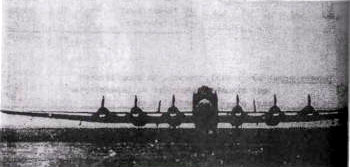Flunking the Fed
Friday, June 27th, 2008Grim day yesterday, as oil rose into the stratosphere and stocks took it on the nose. Just to put things in perspective, we are now on track for the worst June on Wall Street since the Great Depression. What’s really scary here is that it’s not just oil prices that are driving this; the market was also reacting to clear signals that the credit crisis (which bankers were so eager to assure us was now behind us) remains in its early stages. Worse, Fed chairman Bernanke is clearly floundering amidst the crisis that Greenspan spent his entire career postponing. Barclays Capital warned its clients yesterday that central banks have flunked their “first major test in 30 years”, and that their pumping of money into the economy has given them “zero credibility . . .and the Fed has negative credibility, if that’s even possible.”
Harsh words. Maybe too harsh, given that it’s not just the Fed’s fault. The stupidity of the much-vaunted stimulus packages passed by Congress and signed by the Prez this past spring is now manifest: at best that stimulus had no impact; at worst, it persuaded just a few more debt-stricken consumers to stagger to their local Circuit City for a TV they couldn’t afford. We’ve been sleepwalking for so long; what’s ten more minutes after you’ve already hit the snooze button fifty times? But unfortunately the scene now is like that at Arthur Dent’s house in Hitchhiker’s Guide: the bulldozer is right outside the window, and it’s about to come crashing through. Royal Bank of Scotland just issued a warning that the “chickens are about to come home to roost”, and that by September the markets will be in full, devastating retreat. It’s hard to see how that scenario can be avoided now.
Meaning that the Fed will be confronted with the dilemma they’ve been so desperate to avoid for so long. Raising interest rates offers the only hope of stemming the runaway inflation that rising oil and commodity prices are threatening to unleash. But the impact on the long-deluded American consumer will be nothing short of catastrophic . . and that’s a word that I fear we’re going to hear a lot more of in the weeks and months to come.




 You’re looking at the Junkers 390, a six-engined monstrosity capable of flying all the way to New York and then returning to Berlin for a round of schnapps. In fact, there are (admittedly unconfirmed) reports that this thing did exactly that in 1944 on a dry run, turning back even as its crew saw the lights of Manhattan emerging over the horizon. No prizes for guessing what kind of bombing run they were training for: by that point in the war, with the Reich collapsing around Hitler’s ears, there was really only one reason to try to hit New York, and that was with an atomic weapon. Fortunately, the German atomic program was way behind by that point, so it all came to naught.
You’re looking at the Junkers 390, a six-engined monstrosity capable of flying all the way to New York and then returning to Berlin for a round of schnapps. In fact, there are (admittedly unconfirmed) reports that this thing did exactly that in 1944 on a dry run, turning back even as its crew saw the lights of Manhattan emerging over the horizon. No prizes for guessing what kind of bombing run they were training for: by that point in the war, with the Reich collapsing around Hitler’s ears, there was really only one reason to try to hit New York, and that was with an atomic weapon. Fortunately, the German atomic program was way behind by that point, so it all came to naught.

